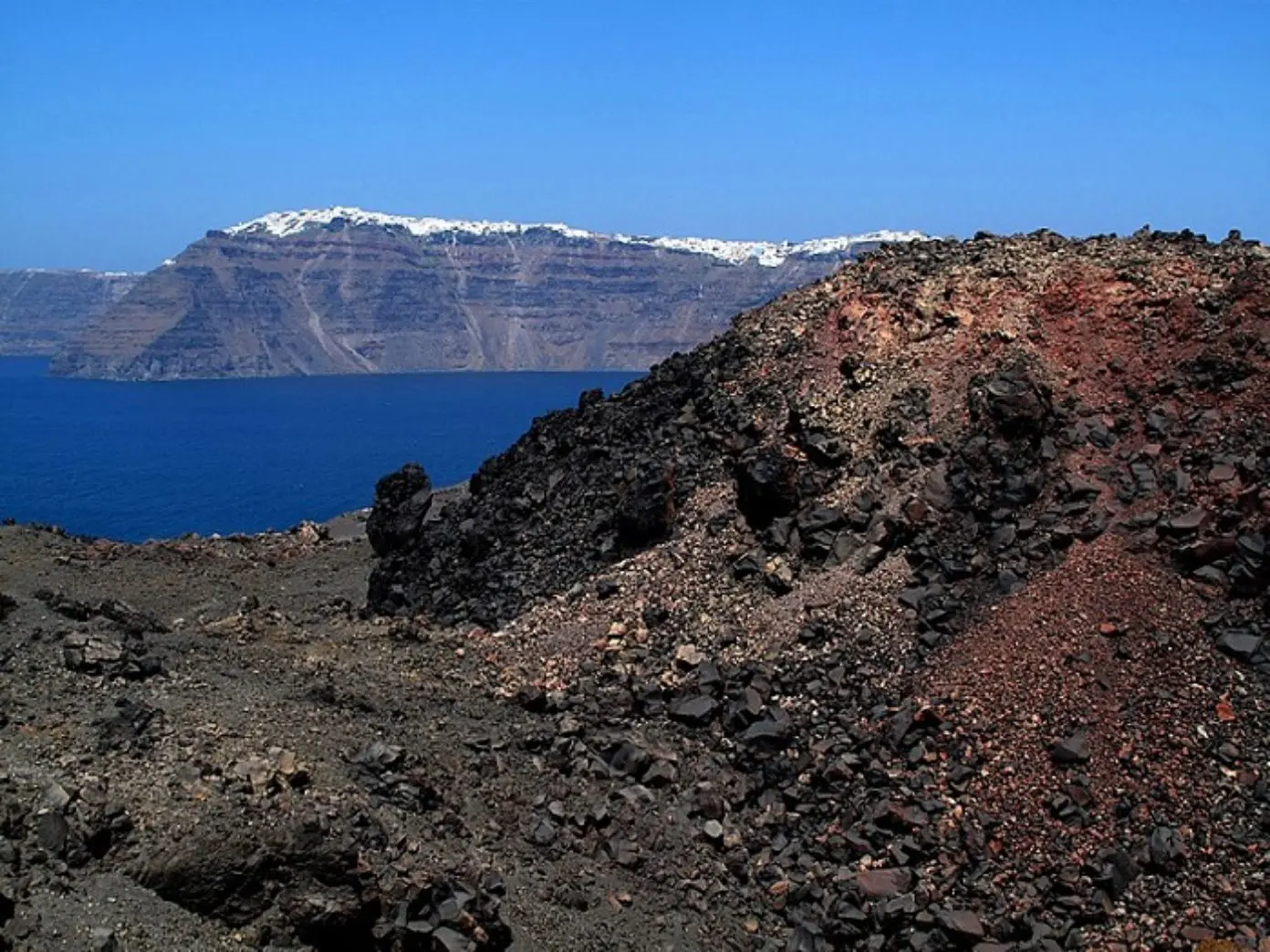Santorini Volcano to Erupt Again, Say Scientists

A group of scientists collaborating in an effort to make a new geomorphologic map for the volcanic island of Santorini believe the cosmopolitan island is “at high risk for volcanically- and seismically-induced hazards.”
The new effort to create the map was brought about by a desire to further enhance the existing “hazard assessments” on the southeastern Aegean island which draws hordes of tourists to its spectacular vistas, with cliffs sweeping down to the sea.
Published in the scientific periodical The Journal of Maps on March 2 of this year, the paper shows planetary geologic mapping techniques to create a map that shows both land and sea areas belonging to what is termed the Christiana-Santorini-Kolumbo Volcanic Group.
The abstract of the paper states that “Submarine geomorphologic maps are used to provide geologic context and spatial information on landforms and related geo-hazards for risk management.”
Volcanic island of Santorini one of world’s tourist hotspots
The caldera of the dormant volcano of Thera, on which the tiny islet of Nea Kameni is perched, across from the main island of Santorini, is a hotspot for travelers who visit the stunningly- beautiful island, which has villages perched atop its craggy peaks.
The website Volcano Discovery states “There are some (still minor) signs that the volcano of Santorini could wake up in a medium future (months to years.) Predicting IF and if yes, WHEN exactly there will be a new eruption is impossible – volcanoes are and will always be unpredictable.
“It is quite certain, though, that the volcano will erupt in the future again, because it is an active volcano and far from extinct.”
Santorini blast destroyed island’s Minoan civilization
The volcano has erupted nine times in the last 2000 years, the last blast occurring in 1950.
The most cataclysmic eruption in the history of the island took place 3,666 years ago in one of the most cataclysmic events in world history.
The blast put a violent end to the rich Minoan civilization which has flourished on the island since time immemorial, serving as a warming that even today, the unthinkable could happen again.
However, Greece’s General Secretariat for Civil Protection said that it has a plan ready for just such a disaster.
An official told Greece’s state-run Athens-Macedonia News Agency in February of 2020 that their 184-page study, nicknamed “Talio,” includes an emergency response and immediate/short-term impact management plan for any volcanic activity which might occur at Santorini.
Greek government plan in place in case of blast
The Ministry stated “in view of the imminent danger of volcanic activity in the Santorini volcanic complex,” the document it prepared had taken into account the alert level designation set by the Hellenic Observatory’s Standing Monitoring Committee.
However, it is still not clear how any plan could prepare for a sudden, cataclysmic explosion such as New Zealand’s White Island blast, which occurred on Dec. 9, 2019. In that event, there was little or no warning when the volcano suddenly erupted, killing 21 visitors to the island.
Two are still missing and presumed dead in the incident, which happened in the middle of a tourist boat excursion to the island. Some victims were already on the island when it blew.
Greece’s Secretariat, however, maintains that there is no cause for alarm at present since there are no signs that the Santorini volcano, will erupt anytime soon.
The area is a hotbed for geologic activity and there is a second volcano nearby, currently underwater at 8.5 kilometers (5.28 miles) from Santorini. Called “Colombo,” it is just northeast of the island.
The volcanic complex around the tourist magnet of Santorini also has another active source in the same archipelago, a smaller volcano called “Kameni.”
Santorini may have been Lost City of Atlantis
A new documentary airing on the Discovery Channel says that the ancient lost city of Atlantis may indeed have been located on what is now known as the Greek island of Santorini.
Covered by 200 feet of ash from an volcanic explosion, almost unimaginable artistic riches, showing extravagant wealth, that have been unearthed recently in the area known as Akrotiri on the island of Santorini have offered up yet more tantalizing clues as to its real identity.
The eruption of the island — which was originally called Stronghili, or “round” — in 1650 BC, decimated all life on the island and erased an entire city-state, which has been shown by archaeologists to have been part of the Minoan civilization.
The great philosopher and writer Plato, in his writings “Timaeus” and “Critias,” described the beauties of the once great and militarily powerful island, whose inhabitants became so enamored with themselves and so arrogant that the gods destroyed the city as punishment.
Source: Greek Reporter






